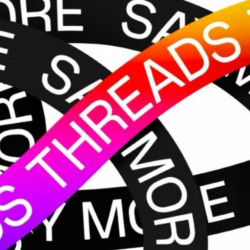In the cosy PC game Unpacking, players unpack moving boxes and place items around an empty house. That’s it. The visuals are ultra-basic, Game Boy-style. The music is soothing. The items are bright. There are no times or scores. It’s won a ton of awards and is hugely popular.
Cosy games aren’t totally new. Harvest Moon was huge in the ’90s, the precursor to recent smash hit cozy farming game Stardew Valley. In recent years, however, they’ve become their own, ever-expanding genre. People of all ages are settling in, logging on, and spending hours in these simple, soothing worlds. Given their popularity, there are plenty of things to learn.
Here’s just a few:
Comfort can be bright
Calming, ‘mindful’, soft, pastel/neutral aesthetics have dominated the wellness industry for a decade. Many of these games however are bright, bold, saturated. Stardew Valley is full of high contrasts, Animal Crossing is a rainbow. If we want to convey calm, we don’t have to mute the palette. Happy, optimistic, saturated colours can be soothing when presented in the right context.
Cosiness can convey harsh truths
In Spiritfarer players play as a young person building a cosy boat that can carry dead spirits to the afterlife, making the passage as comfortable and soothing for the departed as possible. It should be sad, and in some ways, it is, but it’s also reassuringly cute. It feels like it could be made for kids to help teach them about death, but it’s for everyone. Everyone can benefit from a game that faces the moment of passing with care and compassion.
Cosiness is not only for optimistic brands. These aesthetic metaphors and imaginary contexts could be applied to more realistic, sad, or uncomfortable subjects (e.g. health, anxiety).
Cosy gaming is a lifestyle to tap into
Cosy games are not always played on their own. Some people use them as background, as soothing repetitive tasks in between work, or done while listening to an audiobook. Many people have cozy gaming setups, matching their furniture and equipment to the cosy games they play.
Brands can explore how to become part of this cosy gaming day-to-day world e.g. matching aesthetics, exploring similar positive meditative repetition in products, or becoming part of the cosy gaming ritual.
Cosy games transport people to a better natural world
Many recent cosy games focus on idyllic countryside life, from farming (Stardew Valley), to conserving nature (Snufkin: Melody of Moomin Valley), to creating a cottage (Animal Crossing). One of the most anticipated games of the year is Tales of the Shire, a hobbit game which (people hope) will keep the player in the comforting Shire, simply living, with no harrowing trip to Mordor. In 2020 there was a discussion about how people were playing open world games like Zelda: Breath of the Wild and Red Dead Redemption 2 just for the experience of wandering around beautiful natural landscapes.
This is an extension of that need, completely taking away the combat, stress, and goals of typical console games. Players need do nothing but exist in an idyllic world (and maybe farm a little). The desire to escape to the country from the comfort of one’s home isn’t going away. Brands can take inspiration from these cute digital-pastoral aesthetics in product, packaging and communications, tapping into the sense of comfort provided by this better world. Not only for children, but for everyone.
Cosy gaming is continuing to grow, alongside other cosy trends in board games and fantasy books. It’s a genre worth exploring, as cosiness is for everyone.
Featured image: Spiritfarer































